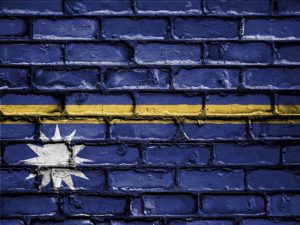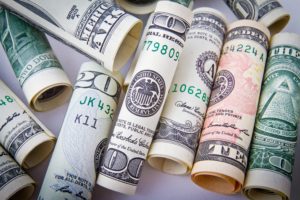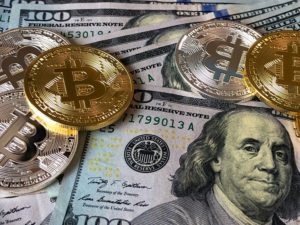According to the United Nations Office on Drugs and Crime, the estimated amount of money laundered annually is between $800 billion – $2 trillion, that is 2-5% of global GDP. While this margin is huge, even the lower figure is serious and puts the recent global anti-money laundering efforts into perspective. We have dug into some of the biggest and most famous money laundering scandals in history and are here to give you the intriguing details and numbers.
Money laundering is nothing new, although it may well feel like it is, since in recent times it has become a popular topic and a constant point on the agenda of many regulatory bodies and international or intergovernmental forums. The truth is, however, that money laundering has existed for many centuries. As discussed in one of our previous articles, it dates back all the way to the 13th century B.C. Nowadays, governments do the best they can to prevent money laundering, repeatedly issuing legislation accompanied by numerous recommendations regarding anti money laundering. This work is supported by a large number of market actors coming up with innovative and creative solutions that go way beyond what is required by law. However, even these efforts are not enough sometimes, and some crimes do slip through the cracks – at least for a while. They are bound to be uncovered eventually: here are the global highlights of money laundering.
1. Bank of Credit and Commerce International (BCCI)
 BCCI was founded in Luxembourg by Agha Hassan Abedi, a Pakistani businessman, in 1972. The bank grew remarkably quickly, and by the early 1980s, it had become one of the largest banks in the world. Its HQ was set up in Belgium, but the bank operated globally, primarily out of the United Kingdom, while the main source of funding was from Abu Dhabi. The trouble started in 1988, however, which was when the bank faced its first allegations in the United States for money laundering – which, it turned out, were true.
BCCI was founded in Luxembourg by Agha Hassan Abedi, a Pakistani businessman, in 1972. The bank grew remarkably quickly, and by the early 1980s, it had become one of the largest banks in the world. Its HQ was set up in Belgium, but the bank operated globally, primarily out of the United Kingdom, while the main source of funding was from Abu Dhabi. The trouble started in 1988, however, which was when the bank faced its first allegations in the United States for money laundering – which, it turned out, were true.
Following an investigation by Price Waterhouse, allegations arose in 1990 that BCCI was falsifying transactions: what came to light was that large, unrecorded deposits were being made to the bank.
Investigations revealed that the BCCI was involved in a vast number of crimes, including arms dealing, prostitution and laundering money for famous criminal figures such as Saddam Hussein.
It turned out that BCCI and its customers had committed fraud and money laundering to an estimated value of £17.6 billion. They used a set of complex mechanisms to hide their conduct: mostly using shell companies, secrecy havens and layered corporate structures, and, of course, they also utilized a set of connections: BCCI had many well-placed insiders who were able to discourage government action.
The bank was closed in 1991 and liquidated, it still owed over £10 billion to its creditors, the money had seemingly evaporated. Liquidators sued the Bank of England, as the supervisor of the banking sector at the time, for being reckless, for not seeing the warning signs and for failing to take action sooner. Unfortunately, however, the case has never been resolved because it was dropped, and the missing money was never recovered.
This case was probably one of the reasons for Gordon Brown, UK’s then new Chancellor of the Exchequer, transferring banking supervision from the Bank of England to the Financial Services Authority in 1997.
2. Nauru
It is incredibly rare for an entire nation to be designated a money launderer, but it happened in the case of Nauru, the smallest island nation in the world. It used to be an important source for phosphate mining, and after gaining independence from the British, Nauru received a lot of money from Australia for the profits from the mining, thus it became one of the wealthiest nations in the world. The money was used by an incompetent and corrupt government with the craziest schemes – one of their ideas was to make a musical about Leonardo da Vinci, an idea that, unsurprisingly, was an utter flop.
When the phosphate reserves were depleted, in the early 1990s, Nauru transformed itself into an offshore banking paradise and tax haven, with a no-questions-asked attitude towards registration of offshore banking institutions and their customers, who did not even need to be verified.
It’s estimated that at least $70 billion in Russian mob money flowed through Nauru in a single year. Besides Russia, even al-Qaeda took an interest and began laundering money through shell banks. It is obvious why the island was especially attractive to criminals: at one time, its privacy protections were even stronger than those in the well-known offshore money haven of the Cayman Islands.
 Because of all of the above, in 2002, the US Treasury and Financial Crimes Enforcement Network designated Nauru a money laundering state and introduced sanctions that were harsher than those imposed on Iraq or Iran. The sanctions were lifted in 2005, when the island abolished its 400 shell banks, introduced AML and tax haven laws with help of the Financial Action Task Force (FATF), which then removed the nation from its ‘blacklist’.
Because of all of the above, in 2002, the US Treasury and Financial Crimes Enforcement Network designated Nauru a money laundering state and introduced sanctions that were harsher than those imposed on Iraq or Iran. The sanctions were lifted in 2005, when the island abolished its 400 shell banks, introduced AML and tax haven laws with help of the Financial Action Task Force (FATF), which then removed the nation from its ‘blacklist’.
Unfortunately, following its shady past, Nauru has an equally shady present, only with a different set of problems. Since 2001, Nauru has accepted financial aid from Australia for the introduction of the above measures, in exchange for being an offshore asylum seeker processing centre for Australia. Asylum seekers coming to Australia by boat are immediately sent to Nauru, where conditions are questionable at best. Amongst a variety of countries and human rights organizations, even the United Nations has condemned Australia for the detention of refugees on Nauru.
3. Danske Bank
A very recent scandal, with still ongoing repercussions, the Danske Bank scandal became international news in 2018, and has now been called the largest in Europe to date.
But let’s not jump too far ahead! Back in the beginning, Danske Bank was Denmark’s largest lender with a good reputation on the international market. Trouble started in the Baltics in 2007, when Danske Bank took over Sampo Bank, including its Estonian branch. The region’s proximity to Russia has traditionally made them vulnerable to illegal financial flows from their neighbour, but the Bank presumably did not take the necessary precautions.
Just a few months after the takeover, Estonia’s financial minister raised concerns and the Bank received warnings from Russia’s central bank about the Estonian branch being used for suspicious transactions worth billions of dollars. All the warning signs were there, but guess what? Nothing happened: they were ignored by the Estonian and Danish supervisors.
 The executive board of Danske Bank was aware of the large amount of deposits originating from Russia, however, by 2010, again, nothing had been done to investigate, avoid or remedy the problem. They continued to accept these deposits coming from non-residents with little or no intervention. By 2013, which was when the second warning from Russia’s central bank was received, 99% of the Bank’s profits came from non-residents: mostly from Russia and other ex-Soviet countries. At the end of the year, a whistleblower came forward to senior executives, and yet again, nothing happened beyond a few discussions.
The executive board of Danske Bank was aware of the large amount of deposits originating from Russia, however, by 2010, again, nothing had been done to investigate, avoid or remedy the problem. They continued to accept these deposits coming from non-residents with little or no intervention. By 2013, which was when the second warning from Russia’s central bank was received, 99% of the Bank’s profits came from non-residents: mostly from Russia and other ex-Soviet countries. At the end of the year, a whistleblower came forward to senior executives, and yet again, nothing happened beyond a few discussions.
Finally, in 2015, Danske Bank shut down the non-resident portfolio when it became clear that the bank’s anti-money laundering procedures at the Estonian branch weren’t working. They even admitted there were “major deficiencies in controls and governance that made it possible to use Danske Bank’s branch in Estonia for criminal activities such as money laundering”. According to the findings of the independent investigation, more than half of Danske Bank’s 15,000 customers in Estonia were suspicious, and the source of over 58% of the funds were identified as coming from Russia, Estonia and Latvia, while the destinations were worldwide.
The world started paying attention in 2017, and Danske Bank was forced to stop its business in Estonia. Several executives were charged and the Bank was fined 12.5 million Danish crowns ($2 million) by the Danish authorities for violating anti-money laundering rules in relation to the monitoring of transactions to and from correspondent banks.
The impact of the scandal is an estimated $229 billion, various international authorities are still trying to determine how much they are going to fine Danske Bank, while investigations are ongoing – such as in the case of Deutsche Bank – to uncover the roles of other banks in the money laundering scheme. Sweden’s Swedbank was, for example, drawn into the scandal in 2019, after reports that it handled some of the same payments that went through Danske Bank.
4. Standard Chartered Bank
The Standard Chartered Bank based in the UK has officially been around since 1969. It’s problems started in 2004, after it got in trouble with the Federal Reserve Board and the New York State Banking Department because of its lack of AML practices and policies, it agreed to sign a written agreement with them that addressed AML compliance issues at the Bank’s New York branch. However, the bank did not adhere to this agreement, and in 2012, it was accused of breaking sanctions against Iran, working with Iranian customers and thus helping the Iranian government to circumvent US money laundering regulations, for which the Bank received a fine of $670 million.
 An example of the SCB’s failings was an account opened with 3 million UAE Dirham (equivalent to £500,000) deposited in cash from a suitcase with no verification of the funds.
An example of the SCB’s failings was an account opened with 3 million UAE Dirham (equivalent to £500,000) deposited in cash from a suitcase with no verification of the funds.
In April 2019, the Financial Conduct Authority issued its second-largest ever fine to Standard Chartered Bank, £102,163,200 for AML breaches: failure to implement AML practices, ignoring sanctions against Burma, Zimbabwe, Iran, Cuba, Sudan and Syria. Despite the astronomical amount, SCB most likely did not face substantial difficulties regarding the payment: the penalty was anticipated, as SCB announced in February it had set aside $900m (£691m) to cover US and UK penalties.
5. Wachovia Bank
With great size and great power comes great responsibility – and potentially great scandals. Wachovia Bank used to be one of the largest banks in the US before it was purchased by Wells Fargo during the 2008 financial crisis, and it is also responsible for the largest money laundering case of all time.
In 2004, Wachovia was conducting business with casa de cambios (CDCs) in Mexico. CDCs are currency exchange houses where one is able to bring in cash, send it to a bank account and exchange the currency. Now, that in itself sounds like a great and simple way to launder money—it’s not surprising that even in 2004, CDCs were flagged as being risky by financial institutions. Wachovia was also aware of the risks involved, however, while other banks were slowly distancing themselves from them, concerned about the potential for money laundering, Wachovia was deepening its involvement in CDCs.
 CDCs can be legitimate, provided both sides are implementing AML procedures. However, Martin Woods, a whistleblower who joined Wachovia as a money laundering reporting officer in 2005, started getting suspicious: after finding suspicious transactions in connection with CDCs, he filed suspicious activity reports (SARs) regarding those. He also noticed the lack of KYC information, meaning, precisely those AML procedures were missing that would make CDCs legitimate. From all of this, he suspected the involvement of Mexican drug cartels and money laundering. Wachovia were not happy about his actions, and he was told to stop asking questions, which made him even more suspicious, Certain that something illegal was happening, he continued to file SARs, the Bank even told him that he had no right to access the documents the reports were based on, and he was told to stop what he was doing. In 2007, after the US federal law enforcement started to look into Wachovia’s operations, faced with pressure from the US attorney’s office, the Bank stopped its activities with CDCs.
CDCs can be legitimate, provided both sides are implementing AML procedures. However, Martin Woods, a whistleblower who joined Wachovia as a money laundering reporting officer in 2005, started getting suspicious: after finding suspicious transactions in connection with CDCs, he filed suspicious activity reports (SARs) regarding those. He also noticed the lack of KYC information, meaning, precisely those AML procedures were missing that would make CDCs legitimate. From all of this, he suspected the involvement of Mexican drug cartels and money laundering. Wachovia were not happy about his actions, and he was told to stop asking questions, which made him even more suspicious, Certain that something illegal was happening, he continued to file SARs, the Bank even told him that he had no right to access the documents the reports were based on, and he was told to stop what he was doing. In 2007, after the US federal law enforcement started to look into Wachovia’s operations, faced with pressure from the US attorney’s office, the Bank stopped its activities with CDCs.
The real investigation started with a major drug bust in 2006: a DC-9 was intercepted in the Gulf of Mexico and found to be loaded with 5.7 tons of cocaine. During the course of the investigation by the Drug Enforcement Agency (DEA), it was discovered that Mexican cartels were smuggling US dollars gained from selling illegal drugs in America across the Mexican border. These investigations lead to Wachovia, and it was revealed that the money was given to the CDCs, who deposited it in their Mexican bank accounts. The banks did not investigate the origin of the money, which allowed these illegal earnings to enter the legitimate sector. The funds then were wired back to Wachovia’s accounts in the US, where, again, the origins of the money were not checked. Using this method, criminals were able to integrate the illegal funds into the financial system.
However, even though it’s estimated that the amount of money laundered through Wachovia throughout the whole scheme was between $350-380 billion, Wachovia managed to get away with the whole thing, settling the case by paying a $160 million fine and promising to increase its AML procedures.
Wachovia was bought by San Francisco-based Wells Fargo in 2008 to create the most extensive distribution system for financial services in North America. The integration of Wachovia and Wells Fargo is complete, and all Wachovia accounts have been moved to Wells Fargo.
The above-mentioned cases are only the biggest scandals to date, there have been many that did not make the list, but should not be ignored, such as these 10, reviewed by SmartSearch, and there are a couple historically interesting ones, such as the case of Al Capone, or Meyer Lansky.
A key takeaway is that even though AML regulations are becoming stricter, and KYC procedures are more advanced, seeing the involvement of some financial institutions in the schemes, there are, and will always be those who only care about making a profit. Considering this, it is not surprising that a continuing lack of trust in financial institutions has resulted in the steadily increasing popularity of cryptocurrencies.
While these cryptocurrencies are considered risky from a money laundering perspective, the truth is, that compared to the above list of scandals, the amount of money involved in money laundering through cryptocurrency is significantly smaller.
For example, the amount of money that has been laundered in 2019 using cryptocurrency exchanges is $2.8 billion and, for the year 2019, losses from fraud, misappropriation of funds, exchange hacks and thefts add up to US$4.5 billion. Of course, it is more than possible, that because of the complexity of cryptocurrency transactions, and the novelty of the whole industry, the major cases have simply not been uncovered yet. However, there is no need to be discouraged from investing in, trading with, or using cryptocurrency for any legitimate purposes. The same way everyone uses banks, everyone can use crypto, and the complexity which comes with it is only a necessary consequence of the developing technology. There is no automatic equals sign between cryptocurrency and money laundering.







